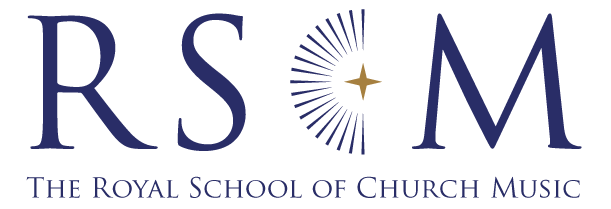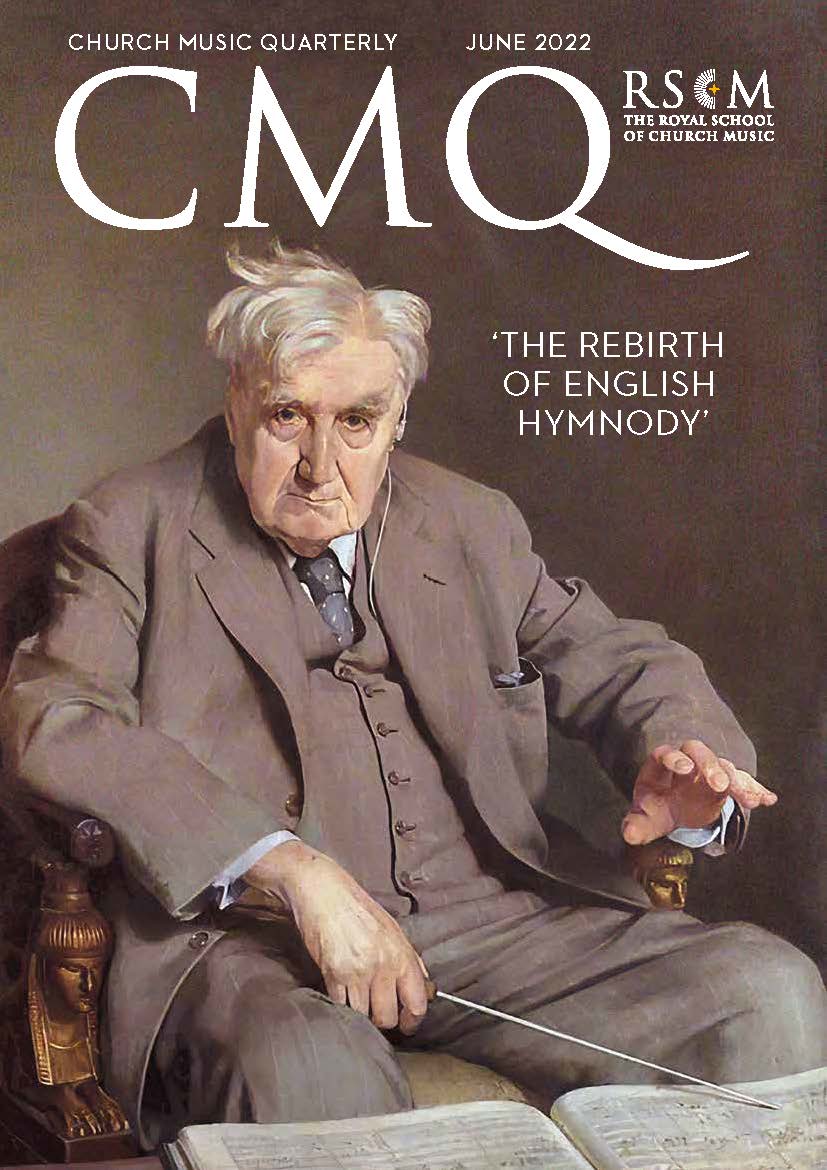
Reviews of CDs
* Worth hearing
** Recommended
*** Essential listening
ORGAN CDs
***
SYMPHONY HALL SORCERY
Thomas Trotter plays the Klais organ of Symphony Hall, Birmingham ♦ Regent REGCD566
Dukas’s The Sorcerer’s apprentice gets this recital off to an exciting start. Trotter’s own transcription remains true to the original orchestral version and is a showcase of his virtuosity and the magnificent Klais organ at Symphony Hall. The textures remain clear and, when it sounds as if every stop is out, the colourful harmonies and rhythmical vitality remain crisp. The movements of John Gardner’s Five Dances for organ receive spirited, enthusiastic, sympathetic performances that explore a variety of moods and timbres. Zsolt Gárdonyi’s jazz-influenced Mozart Changes is played with panache by Trotter and provides an unexpected contrast with his own arrangement of Susato, entitled Dances from Danserye. Canadian Rachel Laurin’s Sweelinck Variations, composed to mark Trotter’s 800th recital as Birmingham city organist, brings this impressive recital to a close.
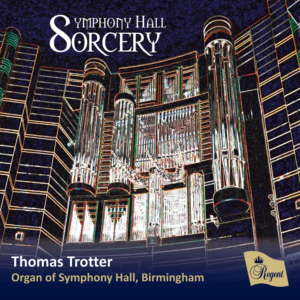
*
SILENT WOODS: MUSIC FOR CELLOS AND ORGAN
Antony le Fleming plays the Alfred Monk organ of St Mary, Hadlow with Naomi Butterworth and Austen Scully (cellos) ♦ CTRS1046 from antlefleming@gmail.com
This is an intriguing recording of mostly familiar music for cello. The combination of cellos and organ works well and Antony le Fleming is a sensitive accompanist. There are a few instances of background noise, and, sadly, occasional intonation lapses. Some pieces fare better than others – Dvořák’s ‘Silent Woods’ (from From the Bohemian forest) makes a peaceful start to the recording. Handel’s so-called ‘Concerto’ for two cellos and organ is particularly successful and finely balanced. Elgar’s Salut d’amour has a few intonation problems and too much is made of the syncopated organ chords. The ‘Romance’ from Shostakovich’s The Gadfly goes at a considerable speed, at the expense of the ornamentation. Bruch’s Kol Nidrei is given a particularly moving performance. The fifth movement of Messiaen’s Quatuor pour la fin du temps, ‘Louange à l’Éternité de Jésus’, brings the recording to a meditative conclusion, although the tempo is again on the fast side.
Ian Munro
**
KARL HOYER’S UNBEATEN TRACKS
Graham Barber plays the Link/Gaida organ of the Pauluskirche, Ulm Fugue State Records FSRCD025
Karl Hoyer (1891–1936) was a pupil and in some ways a successor of Max Reger, writing in an approachable, late-Romantic idiom. There is an extensive worklist in John Henderson’s Directory, much of it little known. On this CD, the four-movement Momento mori! is a first recording, as is a posthumous Fantasy and Fugue on the chorale ‘Wunderbarer König’. Graham Barber controls the huge Link/Gaida organ of Ulm’s Pauluskirche, an instrument ideally conceived for the ripe impressionism of this sort of ‘orchestral’ organ repertoire. If you enjoy Karg-Elert’s organ writing, this CD could be a discovery for you – there is a taster on YouTube in the form of the Variations on a Sacred Folksong taken from this CD.
Judith Markwith
CHORAL CDs
*
AS THE LEAVES FALL
Choral music by Darke and Duruflé Guildford Cathedral Choir / Chameleon Arts Orchestra / Hannah Dienes-Williams (soprano) / Janet Shell (mezzo-soprano) / Katherine Dienes-Williams Regent REGCD563
Two lesser-known works by Harold Darke (1888–1976) preface Duruflé’s 1947/61 Requiem. As the leaves fall is a substantial cantata for choir, orchestra and soprano soloist, setting war poetry by Joseph Monlas Courtney (1891–1973). Guildford’s cathedral choir is relatively small but makes impressive contributions to the disc. The orchestra accompanies sympathetically but there are times where the voices are overpowered. Soprano soloist Hannah Dienes-Williams was still a school pupil when this was recorded; her diction is clear but vocal technique and pitching are not yet fully polished. The Kingdom of God, also by Darke, has more urgency; sadly, the dramatic climaxes tend to be swallowed up by the orchestra and the cathedral’s cavernous acoustic. Duruflé’s Requiem in the 1961 version is well paced and the small choral forces give a meaningful account. However, the problems with balance continue to be present.
Ian Munro
***
RESURREXI!
Easter in Vienna with Mozart and the Haydn brothers Choir of Keble College, Oxford / Emily Dickens (soprano) / Rebekah Jones (mezzo-soprano) / Philippe Durrant (tenor) / Graham Kirk (baritone) / Benjamin Mills (organ) / Instruments of Time and Truth / Paul Brough CRD Records CRD3539
This is a delightful CD, which – with a flick of a switch and some musical imagination – can transport you to the cathedrals of Salzburg and Vienna for a gloriously colourful Solemn Mass on Easter Day.
The centrepiece is a performance (with superb accompaniment from the ensemble Instruments of Time and Truth) of Mozart’s so-called ‘Spaurmesse’, the Missa Brevis in C KV258. According to the excellent programme notes, ‘brevis’ it certainly is – on the order of Mozart’s employer Archbishop Colloredo, who decreed that solemn Masses, even on high days, should last no longer than 45 minutes. Nonetheless, Mozartian colour and sparkle abound. Although the director Paul Brough writes that they’ve not presented a liturgical construction of Mass on Easter Day, there is a sequence: between the usual movements are proper plainsong chants for Easter such as Resurrexi, Victimae paschali laudes and Pascha nostrum. Other works include Michael Haydn’s own setting of Victimae paschali laudes and Joseph Haydn’s Te Deum. This is a superbly balanced recording of sprightly singing and playing, made in the Keble College Chapel.
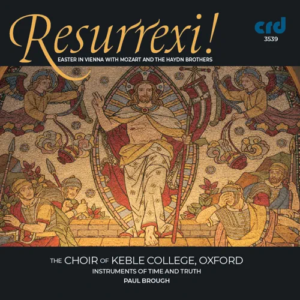
***
WHEN SLEEP COMES
Evening meditations for voices and saxophone Tenebrae / Christian Forshaw (saxophone) / Nigel Short ♦ Signum Classics SIGCD708
If you ever need a cure for insomnia, instead of tuning to a radio station that encourages you to relax, try this soothing sequence of meditative pieces, mostly drawn from Renaissance composers.
Nine of the 13 tracks bring together vocal ensemble and saxophone. This is nothing new of course – remember Jan Garbarek and the Hilliard Ensemble. Here we are given a sonic insight into Christian Forshaw’s own concept of sound, which, he says, is derived from days as a chorister – with phrasing and resonance similar to that of a singer. Thomas Tallis’s Drop, drop slow tears, O nata lux and Te lucis ante terminum are given the Forshaw treatment, as are the Walford Davies chant for Psalm 121 and the hymn ‘Abide with me’. There are four choral pieces by Tallis, Victoria, Owain Park and Forshaw himself. This has been recorded in a church acoustic; the balance and microphone perspective is perfect. Sleep well!
Stuart Robinson
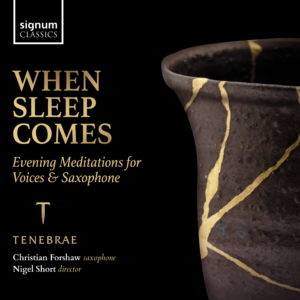
***
NO STORY SO DIVINE
Choir of Arundel Cathedral / Alexander Eadon, Richard McVeigh, John Sharples (organ) / Elizabeth Stratford ♦ Chorum CHORC533
The choir of Arundel Cathedral opens this disc of music for Holy Week with a moving, well-paced and beautifully phrased account of Ola Gjeilo’s Ubi caritas. The intonation and blend are sublime. Rachmaninov’s Bogoroditsye Dvyevo is beautifully sung, with a wonderful sense of line. The polyphonic texture is given space to breathe and individual lines interweave flawlessly. This CD is a testament to Elizabeth Stratford’s inspiring leadership at Arundel Cathedral and the hard work and dedication her choir put in. There are too many highlights to list here, but Rutter’s The Lord bless you and keep you and Chilcott’s Be thou my vision sit nicely alongside less familiar works by John Ireland and Philip Wilby. The three organists, Alexander Eadon, Richard McVeigh and John Sharples, accompany the choir sensitively, each also given the chance to perform a solo piece. Alexander Eadon’s account of Rockingham by Kenneth Leighton is beautifully controlled and deeply poignant. This disc is a glorious accompaniment for Holy Week!
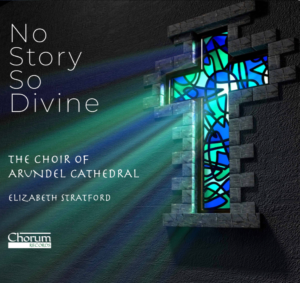
***
EARTH’S WIDE BOUNDS
Chapel Choir of the Royal Hospital Chelsea / Joshua Ryan (organ) / William Vann ♦ Albion Records ALBCD051
This album of Ralph Vaughan William’s religious music marks the 150th anniversary of Vaughan his birth. The Te Deum in G gets the CD off to a spirited start. Crisp diction and the supportive organ accompaniment of Joshua Ryan are a sign of things to come. For all the saints sets off at a speedy tempo – it’s a testament to the choir’s vocal skills that they can keep up. The unaccompanied verses highlight the choir’s impeccable diction and blend. The Mass in G includes sung responses to the Commandments that themselves are read by Rowan Williams, former Archbishop of Canterbury. The Mass is performed in the original sequence Vaughan Williams intended, with the Gloria at the end –the performance is particularly fine. Prayer to the Father of heaven is given a well-paced, meaningful performance.
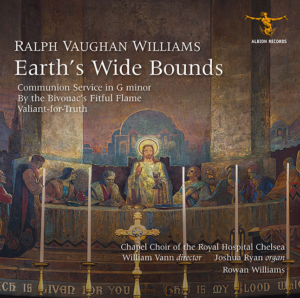
***
DOVE + WEIR + MARTIN
Choir of Westminster Abbey / Peter Holder (organ) / James O’Donnell Hyperion CDA68350
This is a wonderful collection of pieces by three significant composers in the British choral scene. Jonathan Dove’s Vast Ocean of light (complete with rippling Philip Glass-esque organ accompaniment) and Missa Brevis receive excellent performances from the Westminster Abbey Choir. The crisp diction, rhythmical clarity and impeccable intonation are particularly impressive. Dove’s close harmonies and Stravinskian rhythmic writing would pose problems for many a choir, but not for O’Donnell’s singers. Judith Weir’s The true light allows Peter Holder to showcase the Westminster Abbey organ; the ethereal ending of the piece is a particularly impressive moment. Truly I tell you receives a powerful reading. Matthew Martin’s Westminster Service for treble voices is given a splendidly mature performance from the Abbey choristers – who cope effortlessly with complex rhythmical and harmonic writing. Martin’s Behold now, praise the Lord brings this most impressive disc to a cataclysmic close.
Ian Munro
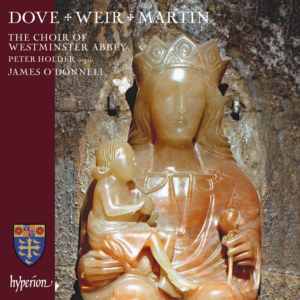
BOOKS
A NOBLE THEME, A SKILLFUL WRITER: TIMOTHY DUDLEY-SMITH AND CHRISTIAN HYMNODY
Scotty Gray and David W. Music
Hope Publishing Co. 487pp.
PB HPC9088 £25.40
The title (with words taken from the start of Psalm 45) that Scotty Gray and David Music have given to their biography of Timothy Dudley-Smith shows their appreciation of his work, not just as a hymn writer but as an inspiration to English-speaking Christians throughout the world. Seven chapters are primarily biographical. After ‘formative years’, there is one chapter per decade. But it is the subsequent seven chapters that are particularly valuable, covering the biblical, theological, liturgical, literary, musical, historical/sociocultural and practical dimensions of Dudley-Smith’s hymn writing. These chapters give context to the texts and relate them to wide-ranging concerns of the world in which Dudley-Smith has written for so long and, we can rejoice, continues to write. A comprehensive index of first lines helps the reader follow the various threads as the same hymn may be discussed from different viewpoints at various places in the book.
Julian Elloway
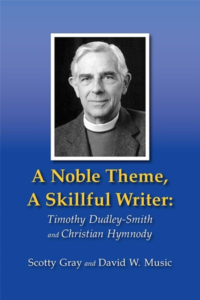
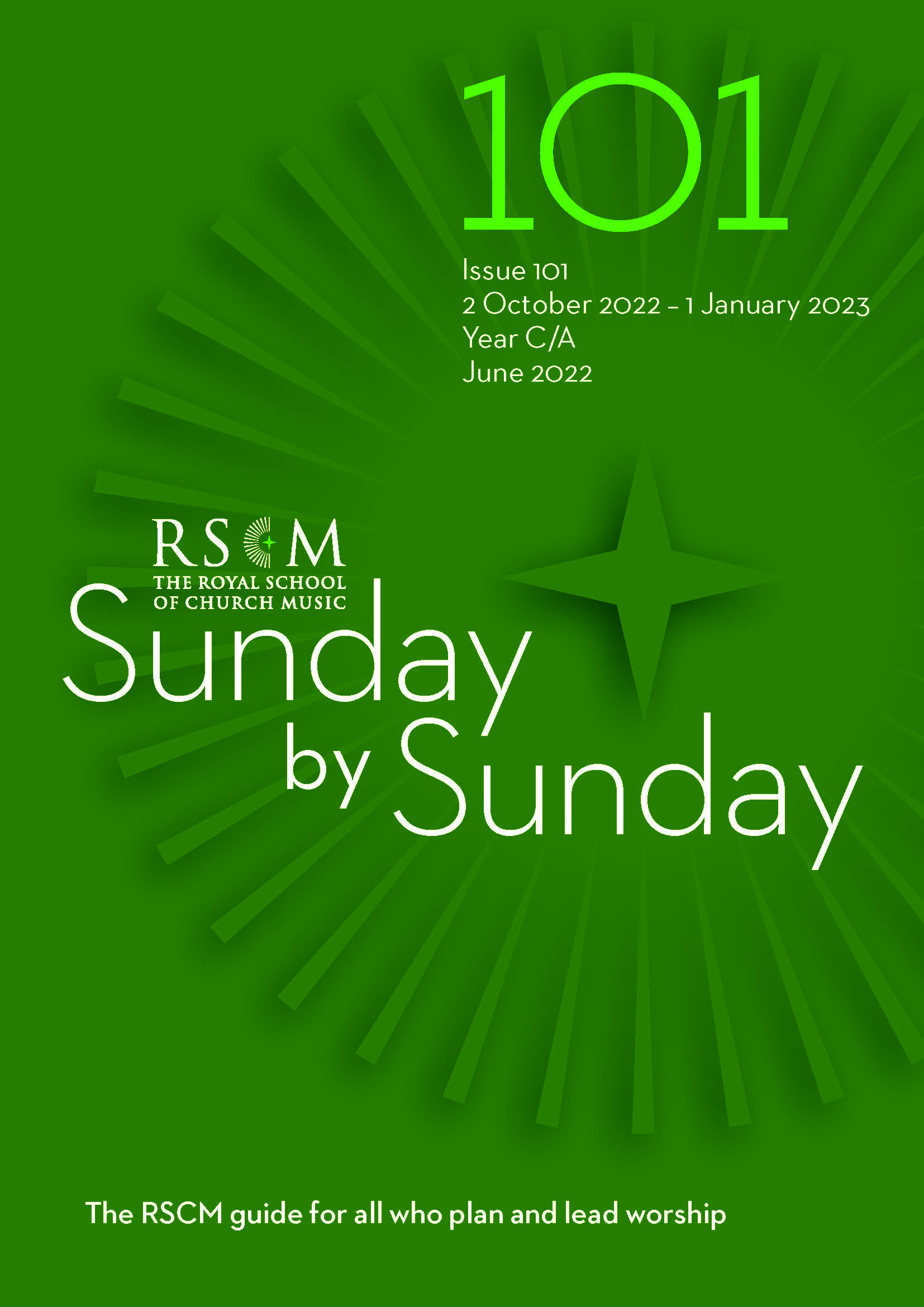
Reviews of printed music
CHORAL MUSIC
E Easy
M Medium
D Difficult
HARVEST AND CREATION
PRAISE THE LORD OF ALL CREATION [E]
Paul Trepte
SS and organ
Encore Publications 020689 £2.50
GOD OF ALL CREATION [E]
Olivia Sparkhall
SAMen and keyboard
Tim Knight Music TKM864 £1.80
The ‘easy’ grading for Paul Trepte’s piece applies only to the vocal lines – there is a sprightly organ part that contains much of the musical interest. Quick to learn (three of the four verses are largely the same), it is an effective harvest anthem, with the contrast of a pleasing and peaceful third verse.
Olivia Sparkhall’s anthem similarly allows the music to be propelled along by keyboard quaver figurations – the accompaniment is marked ‘piano or organ’ but has the feel of being conceived for piano. The Book of Common Prayer texts, covering the fruits of the harvest and the fruits of the Spirit, have been arranged to form both a hymn of thanksgiving and a prayer to use God’s gifts well. The vocal lines are well written, singable and with more musical interest than in many easy anthems.
James L. Montgomery
THINK OF A WORLD WITHOUT ANY FLOWERS [E]
arr. Antony Baldwin
SAATB and organ
Banks Music Publications ECS610 £1.75
In the 55 years since Bunty Newport’s hymn ‘Think of a world without any flowers’ was first published, selected verses have been widely used in varied worship traditions, especially coupled with Graham Westcott’s tune Genesis – a popularity enhanced by the BBC’s schools’ collection Come and Praise. Although a hymn of thanksgiving, its invitation to children and adult singers to stretch their imaginations and think of a world lacking nature, animals and humans has become more relevant in these climate crisis-aware times. Antony Baldwin’s arrangement, with unison first verse, a cappella choir second verse, and unison plus descant to finish, enjoys the move from minor to major in each verse as well as providing organ links back to the starting key.
Julian Elloway
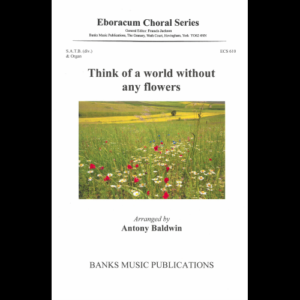
UPPER VOICE ANTHEMS
KEEP ME AS THE APPLE OF AN EYE [M]
Sarah MacDonald
Two-part upper voices, solo or semi-chorus and organ
Encore Publications 020686 £2.50
A PRAYER OF ST COLUMBA [E]
Tim Knight
Unison voices and keyboard
Paraclete Press PPM01918M $1.70
Although written for the specific occasion of Ely Apple Day, Sarah MacDonald’s setting of words from Psalm 17 and the Song of Solomon is a useful, general-purpose prayer for God’s protection. It has a gentle lyricism and in particular a haunting melody that stays in the mind. Easier, but rather less memorable, is Tim Knight’s A Prayer of St Columba. This is an unusually powerful setting of the prayer that starts ‘Alone with none but thee, my God’, never dropping below mezzo forte, confident in God’s protection.
AVE MARIA
Clara Schumann
ST PAUL’S BENEDICTION
Amy Beach
SA and keyboard
ed. and adapted Olivia Sparkhall
Banks Music Publications
KCS007 £1.75 & KCS009 £1.50
Olivia Sparkhall continues to champion the music of female composers, alive and dead, including these two works in her ‘Kassian’ choral series, named after a ninth-century abbess and composer. It would have been nice if the published scores included a little information about the pieces. This applies in particular to the Clara Schumann Ave Maria, as we are not told in what way it has been ‘adapted’. Was the original in two vocal parts and with these words? At least with the Amy Beach, although similarly no information is given, it is easy to track down the original to Beach’s Op.8 ‘Choral Responses’, available online in IMSLP, and discover that what is presented here are the original soprano and alto lines of an SATB composition – the original tenor and bass lines are incorporated into the piano part.
Both pieces are useful, gentle, upper-voice anthems, well worth learning and singing. I wonder though why the original version of the Beach was not also published, giving the opportunity for SATB choirs to sing it.
Stephen Patterson
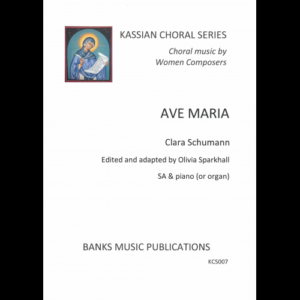
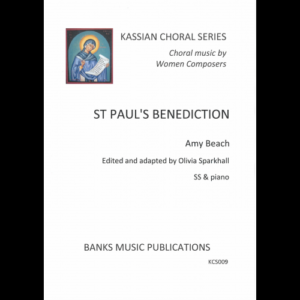
SERVICE SETTINGS
EVENING SERVICE [E/M]
Nicholas Strogers ed. Geoffrey Webber
SATB
Church Music Society RS151 £2.55
A ‘shadowy figure of the early Elizabethan period’ according to John Caldwell, little is known about Nicholas Strogers apart from a City of London organist appointment from 1564 to 1575. This evening service has three movements since, as well as a Mag and Nunc, there is a Deus Misereatur, allowed in the 1552 Book of Common Prayer as an alternative to the Nunc Dimittis – it would form an effective anthem in a service where the normal canticles are sung. The edition by Geoffrey Webber is exemplary in describing the work’s context and also the sources and explaining which ones have been chosen, while a critical commentary is available online. The music is attractive and would make an alternative to the Tallis Short Service, where that is sung – either for SATB as printed here or at the original pitch, a tone lower, for ATBarB. A notable feature is the use of the same opening phrase for all three settings.
Julian Elloway
PRECES AND RESPONSES [E]
Sarah MacDonald
SATB
Encore Publications 020691 £1.95
BENEDICTUS [M]
Richard Lloyd
SSATB
Encore Publications 020685 £2.50
MacDonald’s Responses move at their climaxes from G major to a bright E major, even in the final Amens, but for the most part are relaxed and contemplative in feeling: for ferial rather than festal use. Richard Lloyd’s Benedictus is a fauxbourdon setting with five-part verses alternating with tonus peregrinus chant. Widely spaced chords give a feeling of warmth and richness.
MISSA FESTIVA [D]
David Halls
SATB (with divisions) and organ
Encore Publications 890049 £9.95
MISSA BREVIS [M/D]
Richard Nye
SATB and organ
Banks Music Publications GCL039 £3.95
MASS FOR THE MYSTERY OF FAITH [M]
Ghislaine Reece-Trapp
SATB with solos
Encore Publications 890052 £3.95
Here are three very different settings of the Latin Mass, all for mixed choir and organ. David Halls’s Missa Festiva has an emphasis on ‘Festiva’ – the opening organ solo, introducing the Kyrie, announces that this is a setting conceived on a large scale, needing confident performance with plenty of rhythmic attack, despite moments of quiet contrast and the use of the plainsong Veni Sancte Spiritus. It has the feel of music for a special occasion, and indeed was written for the 800th anniversary celebrations of Magna Carta.
Richard Nye’s organ introduction, by contrast, is a single bar with a single line of music: a five-note pattern that is immediately echoed by the altos with ‘Kyrie’. A note row with just five notes was inspired by a Pembrokeshire coastal chapel. This restraint makes the contrasting, joyful music all the more effective – notably the beginning and end of the Gloria, and above all the Hosannas. At the end of the Sanctus, ‘Hosanna’ is sung just twice, the second time unaccompanied, but at the end of the Benedictus a stream of Hosannas takes off in a wild dance, with voices instructed to sing ‘with a sense of abandon!’
Ghislaine Reece-Trapp’s unaccompanied setting is inspired by Renaissance counterpoint, with a distinctive harmonic language. There is also a rich expressive content, sometimes made explicit in instructions in the music (‘resolutely’, ‘with longing’, ‘with feeling’) and at other times simply there in the musical writing. One senses an awareness of the sublime; it feels like a piece written to be sung within the context of the Eucharist.
James L. Montgomery

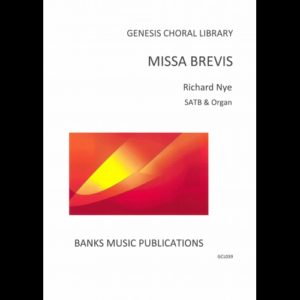
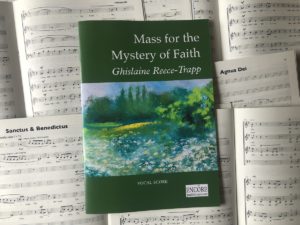
ORGAN MUSIC
E Easy
M Medium
D Difficult
MANUALS ONLY
SIX FAVOURITE OPERA OVERTURES [M]
Johann Christian Bach ed. David Patrick
Fitzjohn Music £12.00
This volume contains five overtures from operas by J.C. Bach (1735–82) and one by Baldassare Galuppi (1706–85), each in three movements with a central, slower movement enclosed by two fast ones, the second of which is often quite short. Only the central movements of numbers 5 and 6 are in a minor key. Keys do not exceed two sharps or flats in the outer movements or three flats in the central movements; time signatures include common time, 2/4 and 3/8.
Passages with repeated semiquaver chords will impact on the choice of tempo, and passages in thirds in both slow and fast movements need care. The texture is more varied than in many concertos of the period and the rapid dynamic changes need careful application on a modern organ. However, there is less rhythmic variety within movements, although Lombardic short-long patterns occur. The introduction gives a brief biography and dates of first performances of the operas; whether Bach himself was responsible for these high-quality settings is open to conjecture.
TWO CONCERTOS [M]
William Boyton ed. David Patrick
Fitzjohn Music £10.00
Apart from a comic opera, some songs, and these two concertos printed in c.1775, we know nothing about Boyton. The first concerto in B flat, in three movements, has a short Andante in F as a second movement and ends with a Rondeau – Tempo di Gavotta with a binary-form central section in the tonic minor, a rare key in British keyboard music of the time. Each movement of the second concerto is in C major: Allegro con Spirito in common time, Largo in 2/4 and Allegro non troppo in 3/4.
The writing is mainly in two parts, with Alberti and murky basses and repeated left-hand quavers appearing frequently. Figures beneath the bass line occur in each movement of the second concerto, although their exact implication is difficult to ascertain. Rhythmic variety is not as pronounced as in some concertos of the period, producing a generally smoother sense of continuity. The concertos are not especially difficult, despite a few tricky passages; the music, quirky in places, offers sufficient variety for both listener and executant.
John Collins
COMPLETE BUXTEHUDE
ORGAN WORKS VOLUMES 1/1 AND 1/2
(‘Free form’ organ works, with pedals)
Dieterich Buxtehude ed. Harald Vogel
Breitkopf EB9415 (2 volumes) €61.90
Also available separately as EB9304 and 9305
Here is a beautifully produced and scholarly edition. Harald Vogel expresses the view that ‘any new Buxtehude edition is an attempt to recreate the original text that is no longer accessible to us’. His method is exacting; the 36-page critical report (in German only) elucidates his editorial approach in detail.
For those who know their Buxtehude through the previous Breitkopf edition of Klaus Beckmann, there will be unexpected moments. Beckmann’s editorial policy in effect intervened to iron out discrepancies by creating an internal consistency. Vogel defers to original sources, preserving anything that previous editors may have viewed as inconsistent. For the most part they concern details of rhythm, but it is the use of the pedal where one finds the most surprising readings.
Vogel’s approach is illustrated by the C major Praeludium (BuxWV 137). Its only source is the Andreas Bach Buch where, despite the title ‘Praeludium in C Pedaliter’, there are no indications as to where the pedal should be used. This is a conundrum. The opening solo is here presented in two-stave format implying that the first six bars could (or should?) be played by the left hand. The entry of the pedal is only indicated in this edition at bar 24 where it is physically impossible to play all the notes ‘manualiter’. But it would surely make more sense musically to introduce it at least two bars earlier. There are other cases where two-stave notation without any pedal indication seems odd (G minor, BuxWV 149, bar 7 onwards, and F sharp minor, BuxWV 146, bars 110ff.); and another where the lowest line in a three-stave passage is in fact marked ‘man.’ (F major, BuxWV 145, bars 61ff.)
This begs questions about the role of an editor. To use this edition, familiarity with the repertoire is helpful; to understand the reasoning for any particular reading, a good working knowledge of German is essential.
Warwick Cole
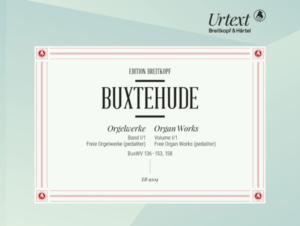
ANTHOLOGIES
A GERRE HANCOCK ORGAN ALBUM [D]
Oxford 978-0-19-355229-6 £18.50
Gerre Hancock (1934–2012) was one of the most respected organists in the USA, famed for his legendary improvisatory skills. His book Improvisation: How to master the art is used as a teaching aid across the world. OUP has now released an attractive collection of some of his organ compositions. Todd Wilson, organist and director of music at Trinity Cathedral in Cleveland, transcribed some of Hancock’s many improvisations, including on Lobe den Herren, Grand Isle and Ar hyd y nos that are also included in this book. Hancock’s own compositions include pieces based on Slane, Antioch (‘Joy to the world’) and Ora Labora (Come, labour on’), along with pieces such as Toccata, Air, and Variations on ‘Palm Beach’. After a recent release of Gerre Hancock’s music from the choir of St Thomas, New York, where Hancock served for over 30 years as organist and director of music, this volume from OUP comes at a time when Hancock’s music is having something of a resurgence here in the UK.
Ian Munro
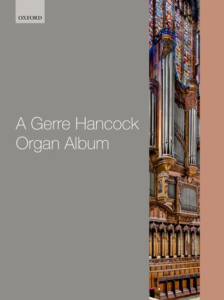
VOLUNTARIES
SUITE FOR JASPER [D]
Malcolm Riley
Banks Music Publications 14114 £7.95
The five movements of this characterful suite would each form an attractive voluntary. Riley is an authority on Percy Whitlock. Although only the opening Fanfare is marked ‘with apologies to PW’ (it starts with a reference to Whitlock’s Fanfare from his Four Extemporizations), I thought I spotted more glances towards ‘PW’ in the subsequent Jig followed by an atmospheric Berceuse, Scherzetto and finally a vigorous Toccata. A child’s train set on the front cover is misleading: the Suite was triggered by the birth of Jasper, but the music is adult (and not easy to play) – written, as the composer says, ‘in the hope that one day he might be able to play it!’
Duncan Watkins
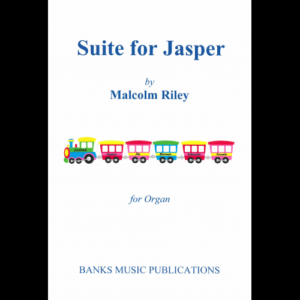
FRANCISCAN FRAGMENTS: VARIATIONS ON EAST ACKLAM [D]
Andrew Carter
Banks Music Publications 14125 £6.95
IMPROVISATION ON A CHANT OF JOHN GOSS [E]
Francis Jackson
Banks Music Publications 14126 £3.95
When Andrew Carter sang in the 1960s as a ‘bass songman’ in Francis Jackson’s choir of York Minster, pasted into the choir’s copies of The English Hymnal was a neat music manuscript signed ‘F.J. Oct ’57’ with the music of a hymn tune that was yet to be called East Acklam. It was for singing with the words ‘God, that madest earth and heaven’, replacing EH’s Ar hyd y nos (or Nutfield in the ‘Chamber of Horrors’ described by Jeremy Summerly on page 13 of this month’s CMQ). It is a lovely feature of the publication of Andrew Carter’s Franciscan Fragments that it opens with a facsimile of one of those manuscript copies – and interesting in that, in this earliest surviving version, there are slight differences of harmony and rhythm from what came to be printed in subsequent hymn books.
Carter’s Franciscan Fragments (Franciscan as in Jackson rather than any other implication) opens with the hymn tune presented as a canon at the octave: 21 bars completed in February 2021 and dedicated ‘for FJ with affection and gratitude’. The nine succeeding variations were written in response to a subsequent commission marking the 10th anniversary of Keith Wright’s appointment as director of music at St Olave, York. They are widely varied, with a further canon (a 3, as if a French Tierce en Taille), a Lament and an Elegy (‘molto doloroso e espressivo’), a Scherzo and a Carnival, a Reverie and a mysterious, chromatic Evocation. In the centre is a manuals-only Dialogue. The work finishes with a Fugue that chases through all 12 keys. The tune itself sometimes appears complete but at other times just, as the title suggests, as a fragment. There is invention in abundance in this tribute from one composer to another.
Dr Maximillian Elliott (who is also to be thanked for the Carter commission) introduces Jackson’s Improvisation on a chant of John Goss. The chant is Goss’s double chant in E, often found with Psalm 37, and derives from a recording of an improvisation in 1982 that Jackson subsequently worked into this short piece – perfect for setting the scene before an evensong.
Julian Elloway
TWO SKY HYMNS AND AN OASIS REMEMBERED [E/M]
Carson Cooman
Zimbel Press (Subito Music) 80101437 $11.95
FOR RICHARD DIEBENKORN [M]
Carson Cooman
Zimbel Press (Subito Music) 80101494 $10.95
The Harvard-based organist Carson Cooman is well known for his tireless support of living composers, both through his weekly recital series and through his ever-expanding YouTube channel that contains hundreds of recordings of a wide variety of works. Beside this selfless promotion of the music of others, it is easy to lose sight of how he is also an excellent composer in his own right, amply demonstrated by these two recent volumes.
Night Sky Hymn and Day Sky Hymn are two spacious works linked by sustained chords and opulent harmonies; An Oasis Remembered (a memorial piece for the Australian composer Robert Allworth who died in 2017) is similarly expansive and radiant. For Richard Diebenkorn is a tribute in music to the American painter (1922–93). It is more complex and sectional, with some passages of directed improvising, yet still easily accessible, spacious and sustained, offering ample scope for exploring the colours of the instrument. This is generous music by a generous musician, well worth exploring.
Huw Morgan
